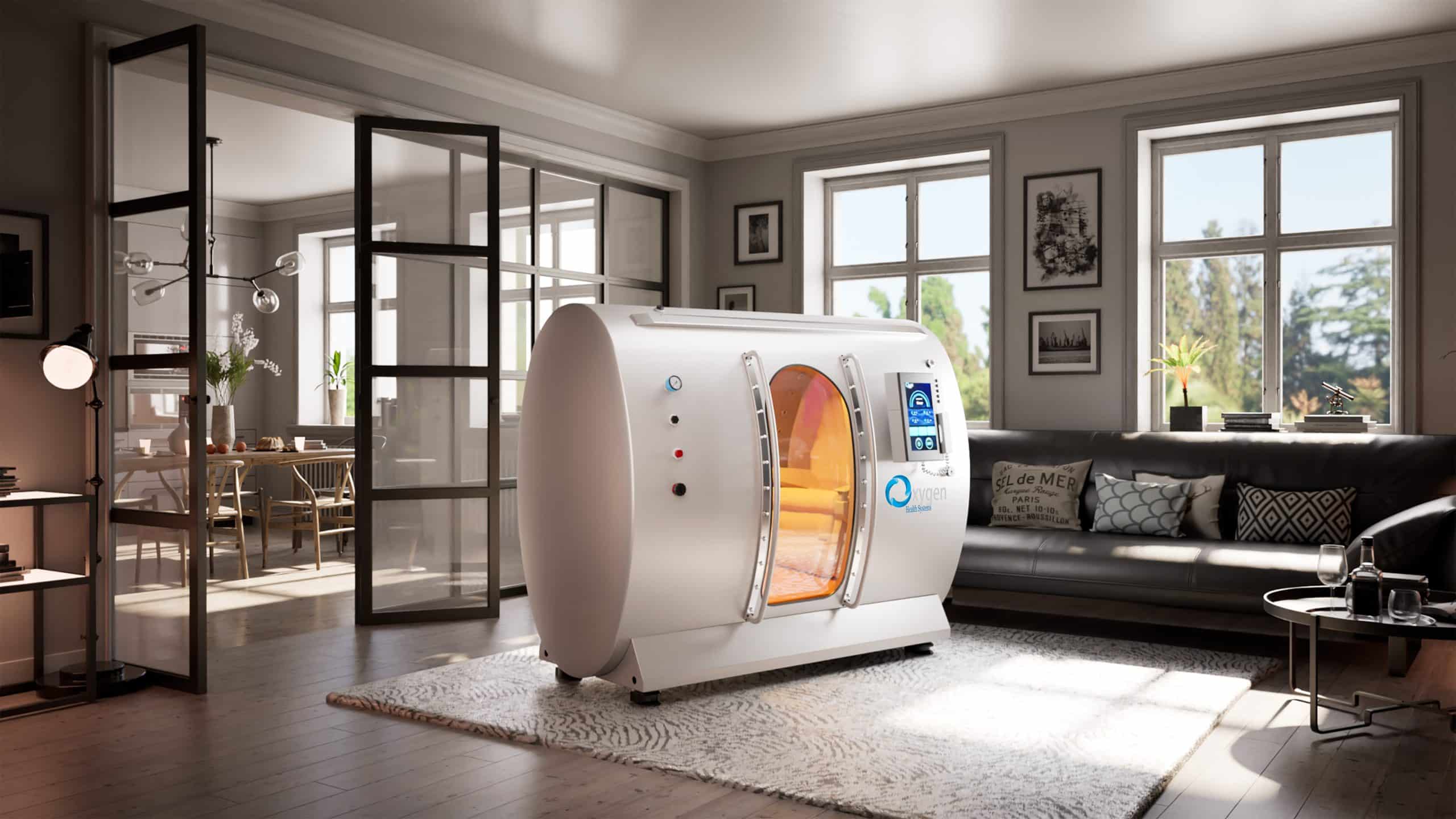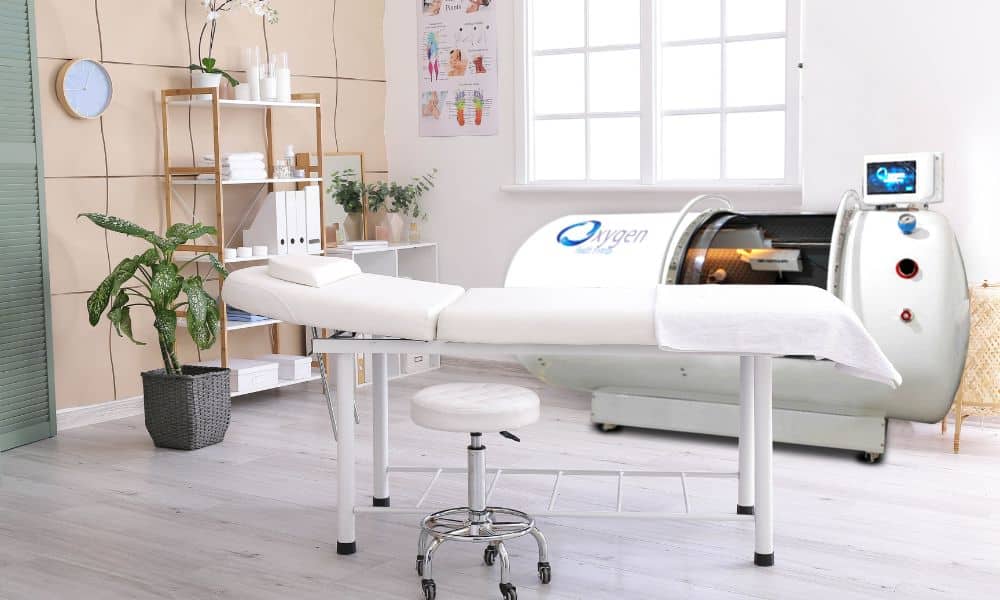Health
Hyperbaric Chamber Diabetes Treatment | Benefits & Risks
Diabetes is a global health crisis, contributing to over 60% of non-traumatic lower-limb amputations worldwide. For those living with diabetes, managing complications like chronic wounds, infections, and neuropathy can feel like an uphill battle.
But what if there was a therapy that could accelerate healing, reduce inflammation, and improve overall quality of life? Enter hyperbaric oxygen therapy (HBOT)—a treatment gaining traction for its potential to address diabetes-related complications.
In this blog, we’ll explore the science behind hyperbaric chamber diabetes treatment, its benefits, and how it aligns with FDA guidelines. Whether you’re considering HBOT for yourself or a loved one, this guide will provide actionable insights to help you make informed decisions.
Hyperbaric Oxygen Therapy (HBOT): Basics & FDA Guidelines
Hyperbaric oxygen therapy involves breathing pure oxygen in a pressurized chamber, allowing your blood to carry more oxygen to damaged tissues. This process promotes healing, reduces inflammation, and fights infections.
The FDA has approved HBOT for specific medical conditions, including diabetic foot ulcers and severe infections. However, it’s important to note that the FDA warns against unproven claims, such as HBOT being a cure for diabetes. Always consult a healthcare professional before starting treatment.
For more details on FDA-approved uses, visit the FDA’s official page on hyperbaric oxygen therapy.
How HBOT Addresses Diabetes Complications: 4 Key Benefits
Hyperbaric oxygen therapy (HBOT) has shown remarkable potential in addressing diabetes-related complications. Here’s how it can make a difference:
- Accelerates Wound Healing
Diabetic foot ulcers are a leading cause of hospitalizations and amputations. Studies show that HBOT can reduce amputation risk by up to 50% by enhancing oxygen delivery to damaged tissues.
This process stimulates collagen production, angiogenesis (formation of new blood vessels), and fibroblast activity, all of which are crucial for wound healing. By promoting tissue repair, HBOT helps patients avoid severe complications and improve their quality of life.
- Improves Glycemic Control
Emerging research suggests that HBOT may improve insulin sensitivity and lower HbA1c levels in diabetic patients. A 2020 study published in Frontiers in Endocrinology found that HBOT reduced oxidative stress and improved metabolic markers.
These findings indicate that HBOT could play a supportive role in managing blood sugar levels, making it a valuable addition to traditional diabetes care.
- Reduces Inflammation and Infection Risk
Chronic inflammation is a hallmark of diabetes. HBOT helps by boosting white blood cell function and reducing pro-inflammatory cytokines, which are key drivers of tissue damage.
This makes HBOT particularly effective for treating infections like cellulitis and osteomyelitis, which are common in diabetic patients. By addressing inflammation and infection, HBOT supports overall health and reduces the need for aggressive interventions.
- Supports Cardiovascular Health
Diabetes significantly increases the risk of cardiovascular diseases. HBOT has been shown to lower blood pressure, improve endothelial function, and reduce the risk of metabolic syndrome.
These benefits offer a holistic approach to diabetes management, helping patients protect their heart health while addressing other complications. HBOT’s ability to enhance oxygen delivery makes it a powerful tool for improving circulation and overall well-being.
The Science Behind HBOT and Diabetes: Evidence-Based Insights

The efficacy of HBOT for diabetes-related complications is backed by robust scientific evidence. A 2021 meta-analysis published in PMC found that HBOT improved wound closure rates by 30% in diabetic patients. Similarly, a 2019 NHS report endorsed HBOT as a cost-effective treatment for chronic diabetic ulcers, citing its ability to reduce hospital stays and improve patient outcomes.
However, it’s important to note that HBOT works best as an adjunct therapy, not a standalone treatment. Always combine it with standard diabetes care, including medication, diet, and exercise.
Who Should Consider HBOT for Diabetes? Safety and Eligibility
Hyperbaric oxygen therapy (HBOT) can be a game-changer for many diabetic patients, but it’s not a one-size-fits-all solution. Here’s who can benefit most and what to consider before starting treatment:
Ideal Candidates for HBOT
HBOT is particularly beneficial for diabetic patients with:
- Non-healing wounds or ulcers: Chronic wounds, especially diabetic foot ulcers, are a leading cause of amputations. HBOT accelerates healing by increasing oxygen supply to damaged tissues.
- Recurrent infections: Diabetic patients are prone to infections like cellulitis and osteomyelitis. HBOT boosts white blood cell activity, helping the body fight infections more effectively.
- Peripheral neuropathy: HBOT may improve nerve function by reducing inflammation and promoting tissue repair.
However, it’s not suitable for everyone. Contraindications include untreated pneumothorax, certain lung diseases, and recent ear surgery. Always consult your healthcare provider to determine if HBOT is right for you.
A typical HBOT protocol involves 90-minute sessions, 5 days a week, for 4–8 weeks. While clinical HBOT sessions can cost thousands of dollars, portable hyperbaric chambers offer a more affordable and convenient option for at-home use.
Choosing the Right Hyperbaric Chamber for Diabetes Care

Selecting the right hyperbaric chamber for diabetes management requires careful consideration of safety, functionality, and convenience. Here are key factors to keep in mind:
- Oxygen Delivery Mechanism: Ensure the chamber maintains a stable oxygen flow to support healing and tissue repair.
- Medical Certifications: Look for certifications such as FDA approval, CE, or ISO compliance to confirm safety and efficacy.
- Ease of Use: A user-friendly design with clear instructions can improve accessibility for home users.
- Size and Pressure Levels: Choose a chamber that aligns with your treatment needs and available space at home.
- Portable vs. Clinical Use: Consider whether you need a clinical-grade chamber or a portable option for home-based therapy.
Conclusion: Enhancing Diabetes Management with HBOT
Hyperbaric oxygen therapy offers a promising solution for managing diabetes-related complications, from chronic wounds to inflammation. While it’s not a cure, it can significantly improve your quality of life when used alongside standard care.
Considering HBOT for diabetes management? Evaluate safety, efficacy, and expert recommendations before making a decision. Consult healthcare professionals to determine the best approach for your needs. For personalized advice, contact our experts today!
FAQs
Is HBOT FDA-approved for diabetes?
Yes, HBOT is FDA-approved for diabetic foot ulcers and infections, but not as a cure for diabetes. Always consult your doctor.
How does HBOT help diabetic foot ulcers?
HBOT delivers pure oxygen under pressure, speeding up wound healing and reducing amputation risk by up to 50%.
Can I use a hyperbaric chamber at home?
Yes, portable, FDA-cleared chambers are available for home use. Consult your doctor and choose a certified product.
Are there side effects of HBOT?
Mild side effects like ear pressure or fatigue may occur. Serious side effects are rare with proper use.
How long until I see results?
Improvements in diabetic ulcers may appear in 4–6 weeks with regular sessions. HBOT works best alongside standard diabetes care.

